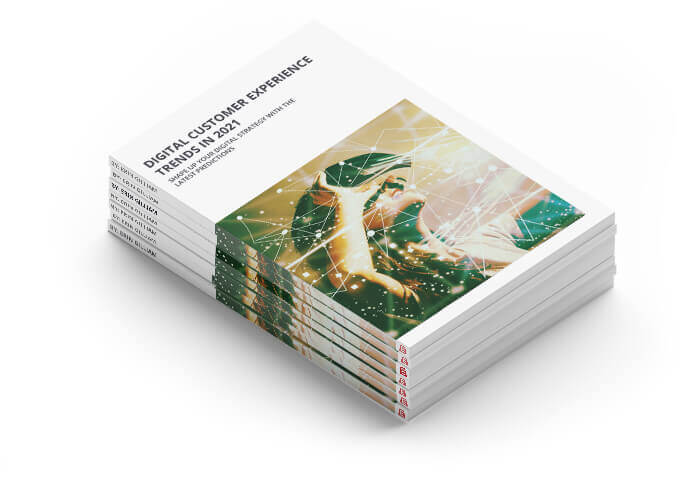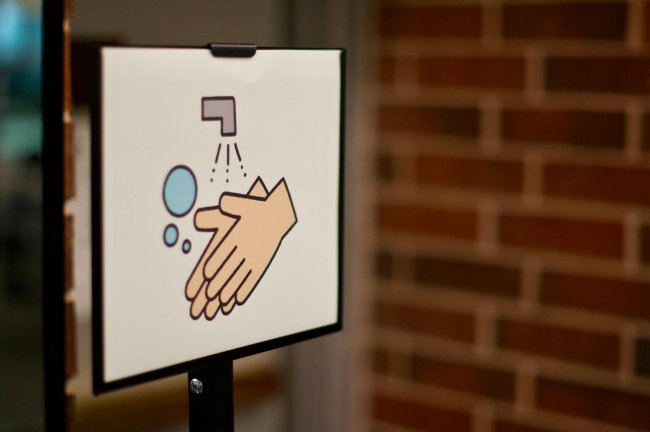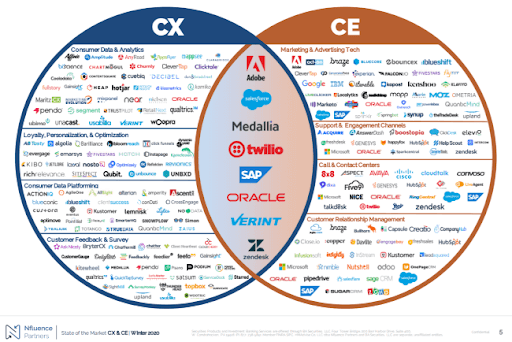No doubt, the last year and a half has been challenging for everyone. For brands, the crisis has brought about fundamental changes to how customers behave, resulting in what can only be described as a tectonic shift in their behaviour. Now, as we enter the last quarter of 2021, the need and investment in customer experience (CX) has risen exponentially. What was once a simple nice-to-have has reached its tipping point and, almost overnight, having a strong investment in CX has quickly become a matter of survival for all companies.
Propelled by this transition, 73% of businesses reported that CX is becoming a first concern, while 38% of companies have indicated that over the next year, investing in customer experience cx tools will be a key priority. Not only that, but many consumers would pay 16% more for a better customer experience cx, according to a study carried out by PwC.
The new customer experience (CX) cannot be digital only. Customers will expect the same experience and consistent information regardless of medium. The CX in the ‘new normal’ must be much more seamless and consistent everywhere.
Cynthia Stoddard, CIO and SVP of Adobe

Free Whitepaper: Digital Customer Experience (CX) Trends of 2021
A comprehensive guide to the digital customer experience (CX) trends of 2021.
During these unprecedented times, it’s essential for CX leaders to not only understand what customers value, but to also approach customer journeys with a precise and agile mindset. Only by continuously optimising the customer journey will these leaders be able to meet the ever-evolving needs of their customers.

In this follow up from last year’s state of customer experience (CX) post, we will bring you up to date with the current state of the customer experience space in 2021, including some top CX trends. We will also highlight all the movements happening in CX by laying out all the major acquisitions and mergers that have taken place since our last post, and share input from a number of known experts in the CX space.
This is the State of customer experience (CX) in 2021.
According to McKinsey,
The COVID-19 pandemic has sped up digital adoption by several years and reshaped consumer behaviour in the bargain. As consumers and customers continue to conduct most of their activities online, companies are using advances in analytics to improve performance in marketing and sales, operations, supply chain, and revenue management. However, when it comes to customer experience (CX), organizations continue to lag.
This State of CX 2021 article consists of three main parts:
- Market Consolidation and Acquisitions in the CX Market
- The Latest Trends in CX
- Views from CX Experts
Let’s start off by taking a closer look at what’s going on in the CX market.
Latest Market Consolidation and Acquisitions in the CX Software Market
Here’s an interesting view from Nfluence Partners, presenting the major players in the market.

As you can see, just like in 2020, there are some major players and an all-encompassing suite of tools in the middle of this landscape. Read on, and you’ll see that these are many of the same tools that have been actively acquiring some smaller, niche solutions. This was a visible trend in 2019 and in 2020 and will likely continue to occur as we continue to see more and more niche tools popping up.
The Current State of the Customer Experience (CX) Market
Let’s rewind a little. Back in 2019, Mopinion published the State of CX 2019, which identified some reasons to explain why there has been so much movement (both expansion and consolidation) taking place among CX software solutions. Since then, with a pandemic still ongoing, it’s safe to say that a lot has changed.
I’ve never seen (consumer) behaviour change so rapidly, and I’ve never seen companies pivot so quickly.
Janelle Estes, Chief Insights Officer, UserTesting
Let’s catch up on the latest changes in the market since our last post.
SAP acquires Emarsys
October 2020 – SAP, (which acquired Qualtrics in 2018) acquired Emarsys, a leader in omnichannel customer engagement, for 940 million USD. Emarsys enables brands to deliver highly personalised customer interactions. This acquisition will enhance the SAP customer experience cx portfolio to create a new model for how commerce is managed digitally.

Twilio acquires Segment
November 2020 – Segment, a customer data platform, was acquired by Twilio for $3.2B last year. This acquisition allows Twilio, a cloud communications platform as a service company, to provide a more personalised and timely engagement across customer service, marketing, analytics, product, and sale by leveraging Segment’s personalisation functionality.

Facebook acquires Kustomer
November 2020 – Facebook, the tech giant, announced last year their plans to acquire Kustomer, a startup CE platform for connecting customers across social media, web, or mobile chat. Initially intended as a means of bolstering its WhatsApp messaging service, which has gained extra popularity amid the pandemic, this acquisition allows the social media giant to position itself strongly in the CE market.

Thomabravo acquires Medallia
July 2021 – Thomabravo, a leading software investment firm, acquired Medallia for 6.4 Billion USD in a deal that will close by the end of this year. A renowned customer experience cx company, Medallia uses trademarked artificial intelligence and machine learning technology to reveal predictive insights that drive business actions and outcomes. Medallia went public in 2019, but with this acquisition will now revert to a private company.

Qualtrics acquired Clarabridge
July 2021 – A customer feedback analysis solution, Qualtrics’s acquired Clarabridge, one of the leaders in omnichannel conversational analytics, in a stock transaction valued at 1.125 billion USD. An award-winning platform, Clarabridge was a highly attractive acquisition target for any vendor seeking to leapfrog the competition and achieve sustainable differentiation. With this deal, Qualtrics will catapult itself to the front of the customer feedback management (CFM) pack.

Contentsquare acquires Hotjar
September 2021 – Contentsquare, a global leader in digital experience analytics, announced that it is joining forces with Hotjar, a leading product experience insights platform in the SMB market. This acquisition will lend Contentsquare’s advanced technology and resources to Hotjar, while Contentsquare will benefit from Hotjar’ reach and product-led approach.

Verint acquires Conversocial
September 2021 – Conversocial, a leader in conversational customer experience cx delivered over messaging channels, was acquired by Verint for 50 million USD. Verint is a pure-play customer-engagement company that is expanding its cloud platform capabilities to help brands accelerate digital-first customer engagement.

Zendesk acquires Momentive
October 2021 – Zendesk, a software-as-a-service company and Momentive, an experience management company, have entered into an agreement under which Zendesk will acquire Momentive, including its well-known SurveyMonkey platform. CEO Mikkel Svane says that the purchase will enable Zendesk customers to “build more meaningful relationships” by providing opportunities to cross-sell and co-develop current and future products.

So what are some of the trends that drove these mergers and acquisitions to take place in the first place?
Latest Trends in CX
As we mentioned, the past eighteen months has been like no other, and therefore the trends and movement in the CX market are shifting and changing to match the current state of the climate.
The pandemic accelerated the shift to digital experiences, pushing businesses to implement technologies that drive stickier relationships and competitive differentiation.
Customers today no longer base their loyalty on price or product. Instead, they are loyal to companies based on the experience they receive. It sounds severe, but the truth is, if you cannot keep up with their increasing demands, your customers will leave you. It’s as simple as that.
A lot has happened since last year, and while many trends have continued and evolved, such as the improved online experience, and optimised customer journeys, there have been several more noteworthy trends popping up in CX.
This overview of CX trends covers everything from:
- The rise of artificial intelligence & instant gratification
- Emphasis on agility
- Data & privacy matters
- Prescriptive personalisation
- Empathy
Let’s take a closer look.
1. AI adoption & Instant Gratification
Last year, in the state of CX in 2020, we wrote about the trend of increased confidence and comfort in AI. We discussed that, in the context of the current crisis, AI has been helping CX teams meet the unusually high demands. We also noted that once organisations started turning to AI technologies to boost their CX, they were able to meet these growing demands.
Since then, the need and expectation for around the clock customer service has, unsurprisingly, not decreased. 40% of customer experience cx centric companies believe the adoption of artificial intelligence technology to be extremely significant for usage in decision-making and recommendations to employees.
To create value, AI in CX must be viewed as long-term assets requiring investment to scale. The more you invest now in AI to deliver a meaningful and memorable CX, the more customer engagements you will have.
Greg Cross, Co-founder and chief business officer at Soul Machines
Though there are still some hurdles to overcome, such as competing brand priorities and difficulty adapting to the technology itself, there are plenty more benefits to the adoption of AI and machine learning technologies.
According to this report by the CX network, brands must build a culture where AI receives the appropriate level of focus for it to develop, whilst ensuring they stay up-to-date with the latest in AI or machine learning technology to ensure that they are delivering a service that meets customer expectations.
2. CX agility to be a driver of success
We often hear the term the ‘experience economy’, regarding the economy of today, in which customers value the overall purchasing experience as much as the service or product they’re buying.
If there was anything to take away from the past year, it’s that being adaptable to change is something that businesses should really focus on. Businesses today must offer high-quality interactions to provide a valuable opportunity for competitive advantage.
Without question, agile, adaptive change will be sustained and in fact is likely to continue becoming more and more significant. The key is that agile is seen as an approach to ALL change – behavioural and process – not just technological change.
Ian Golding, CX Specialist
We saw the need for this at the beginning of the crisis, as companies shifted to working from home models. Adapting to the same changes your customers are dealing with is key for businesses in the post-covid era.
However, as Ian has noted, the key thing to observe with this trend is that agile has to be seen as an approach throughout the business both in technology, behavioural and within processes, both internally and externally.

3. Data & Privacy matters
With the pandemic ongoing, it’s no surprise that with this shift to digitization comes an increased interest and knowledge of data and security online.
Customers today know more about how their data is being used, and therefore don’t like to give unnecessary details without good reason. When creating surveys, we always say that, if you don’t need to know, don’t ask. Before, marketers were collecting whatever data they could get their hands on, and the average consumer was left in the dark as to how their data was being used.
Nowadays, with news stories breaking like the Cambridge Analytica Scandal, it’s hard for customers or users to ignore the importance of protecting their data. So it’s no surprise that 40% of consumers would no longer shop with a business if they are unable to deny access to their personal information.

4. Prescriptive Personalisation
According to Salesforce, in 2020, 75% of B2B customers expected businesses to predict and pre-empt their needs before making contact. Customers don’t mind giving some information, but expect a certain level of personalisation in their experience in exchange.
Prescriptive personalisation is rule based and triggered by interactions with a user. Marketers find insights from a variety of sources, such as recent activity, history, current clicking behaviour, context, time of day, and many others. Using storytelling and the traditional word of mouth style marketing tactics, CX professionals can use prescriptive personalisation to ensure the customer experience (CX) is individualised and less automated.
We see the increased awareness of data security and the need for artificial intelligence, but still people crave human-like interactions. An individualised experience helps each customer feel valued and more connected to your company. In the same vein, it seems that customers still prefer talking to live agents over automated customer engagement processes during complex customer situations.
5. Empathy, empathy, empathy
It’s pretty simple in theory: If you want to nail customer experience cx, you need to understand how your experiences make people feel. Not only that, but you also need to make sure that the experiences you provide make your customers feel good. Empathy – defined as “identification with and understanding of another’s situation, feelings, and motives” – is key when it comes to delivering a great customer experience cx, especially now, in this post-covid landscape.
Empathy, customer culture and emotional connections as the base for creating great customer experiences. Customers realise their importance to brands and want to have more of a relationship with them, and to see that brands actually care about customers, society and the world around them.
Damian Miller, Managing Director, Intelligent Purpose

To be clear, this is by no means a definitive list of the current trends in the market. It’s just a few examples of trends driving these movements in customer experience cx. There are many more out there and many more to come now and post COVID.
So what does this really mean, practically? And what exactly can we expect in the coming year? Well, that’s a question for the experts.
Consulting the Experts
The following interviews include various perspectives on how the digital strategies and trends mentioned in this article will evolve, as well as how these experts foresee the industry taking shape in the future.
Let’s see what they had to say…
Ian Golding, Global CX Specialist

With over fifteen years experience in CX, Ian is a global customer experience cx specialist, as well as a renowned speaker and consultant.
“The pandemic has affected the market in a couple of significant ways. Firstly, with the advent of methodologies such as Agile. Many organisations had already started to recognise that the adoption of technological change does not have to take years – but with an enforced change in circumstances for both employees and customers. Even those who had not yet caught the agile bug were caught up in the realisation that change has to be quick, fleet of foot and as agile as possible.
Secondly, there has been an increasing understanding of the need for empathy – with both employees and customers. Historically, organisations have expressed mostly sympathy with customers when things go wrong. Over the last 18 months, the acknowledgement of the importance of empathy has grown – I only hope it remains that way!”
How do you see CX evolving over the next few years?
“Whilst the evolution of digital technology will undoubtedly continue, I hope (I use the word ‘hope’ intentionally rather than ‘think’) that organisations around the world will re-think about the importance of managing their customer journeys.”
For too long, journeys have been mapped, but with little actionable change being delivered as a result. If there is a desire to adopt a ‘customer led’ strategy, then the continuous improvement of the customer journey is an essential ingredient to delivering sustainable growth as a result.
Steven Van Belleghem, International Keynote Speaker

Steven is an expert in customer experience cx in the digital world with over 20 years of experience. He is also a renowned keynote speaker, author and entrepreneur.
What recent CX trends do you see lasting longest?
“I think one of the most important trends that we’re going to see more is that now, services are being built around the customer. In the past we invested our marketing money to make sure that the customer will come to us. To our website, or event, to our store. Whereas now you see that new players and adapted players build services around the customer, which means that the effort of the customer comes close to zero. I think I’m going to see more of that. Be where the customer is, and it sounds so obvious: be where the customer is, but most companies do the opposite.”
What direction do you think customer experience cx might be headed in the next year?
“I see three things that are very important here, the first one is again digital. Digital convenience becomes a commodity, if you’re not convenient you’re no longer in the game. The funny consequence of that, is because of the rise in digital, there’s also a bigger need for real human interactions. Empathy and human kindness is increasing in importance as well. Redefining the human interface is going to be a very crucial one in the next year for CX. The third one, is can your company have a positive impact on society in a way that it relates back to your business model?”
Can you figure out a way to use the strength and the influence of your business model to actually add value to society? That is something that more and more customers expect. They don’t expect you to do charity on the side, they expect you to really rethink the way that you work and rethink your business model in such a way that you bring value to the client and at the same time, you bring value to society.
Kia Puhm, Founder and CEO of K!A CX Consulting & DesiredPath

A professional engineer, Kia is an entrepreneurial executive with over 26 years of experience leading strategic corporate initiatives and managing customer experience cx.
“People are starved for connection and human interaction, so I expect the pendulum of digital-only consumerism/work to swing back a bit. Consumers won’t want to give up the improved conveniences of digital-first experiences (better service, not commuting into the office full time, etc.) that came about during the pandemic, nor will digital-first consumerism slow down anytime soon.
However, people will want to have real-life experiences in both their personal and professional lives. Companies that can manage the customer journey seamlessly between the actual and virtual realm and tie the two together will do well.
Customer experience (CX) is changing even more rapidly than it did before. Customer expectations are increasing and shifting at an ever-increasing rate. Organizations that employ a customer-centric strategy and approach will use customer experience (CX) data to work with and for their customers, mitigating disruption risk and being able to keep up with the pace of change.”
Jim Tincher, Founder and CEO of the Heart of the Customer
Jim has over 20 years of experience in customer experience cx, and is the author of the best-selling book, “How Hard Is It to Be Your Customer? Using Journey Mapping to Drive Customer-Focused Change.”
Even after more than a year, the pandemic has added a significant cognitive load to customers of all types. That increases the need to increase both ease and emotional connection in the customer journey. Customers won’t take the time to read complicated communications and work through hoops. We need to be easier to work with and to find ways to engage customers emotionally.
Looking ahead…
“We’re starting to see a realization that CX is a business discipline, rather than a one-off. Whereas some CX programs are a silo, focused on their own data (survey data) and definition of success (higher survey scores), great programs start with business success, then work back to understand what customers value.
They understand that if their efforts don’t lead customers to buy more, stay longer, and actively advocate for your company, then they’re not changing the customer experience cx in a meaningful way. So, they incorporate the behavioural data into their analysis, looking for what separates the customers who are truly loyal from the rest.”
Ellie Wu, VP of CX, Bugcrowd

Ellie is the acting Vice President of customer experience cx, for Bugcrowd. A member of the board of advisors for ‘women in cloud’, she is also a renowned speaker and author.
“With the multitasking and distributed nature of our customers and employees, self-service will play a bigger part in a positive customer experience cx.
Connecting customers to the quickest, shortest path to resolve their issue/question is the expectation where they will likely search in Google for a video, post, or omnichannel experience.
Customers are juggling more than they have historically managed at a stress level that is likely higher too. This will challenge organizations to get it right, where customers may have a smaller tolerance/understanding for missteps.”
Looking forward

Well there you have it. As you can see, managing the customer experience (CX) is becoming quite complex. The last couple of years have sped up the evolution of CX, and we are seeing that more and more customers are demanding a personalised yet frictionless experiences. No surprise there, as the pandemic meant that companies and customers had to change their behaviour, probably forever. Now, if companies want to survive, they must invest in the right technology and solutions to deal with the ever-changing nature of customer behaviour.
Unsurprisingly, we’re still seeing a great deal of consolidation taking place in the CX space – with CX tech giants swallowing up many of the smaller players in an effort to digitise their offerings and stay in tune with the changing market.
As we look towards the future, we predict lots of changes in CX with multiple factors coming into play such as the rapid digitisation of organisations and their service offerings, as well as providing a sense of human interaction, and emotionally resonant experiences.
As Damian Miller puts it, “Continuing to use technology as an experience enabler will help brands to grow as long as they are centred around creating those emotional connections that drive long-term customer loyalty.”
So prepare yourself for an eventful and (if it’s anything like the past two years) an unforgettable CX in 2022!
Ready to see Mopinion in action?
Want to learn more about Mopinion’s all-in-1 user feedback platform? Don’t be shy and take our software for a spin! Do you prefer it a bit more personal? Just book a demo. One of our feedback pro’s will guide you through the software and answer any questions you may have.








